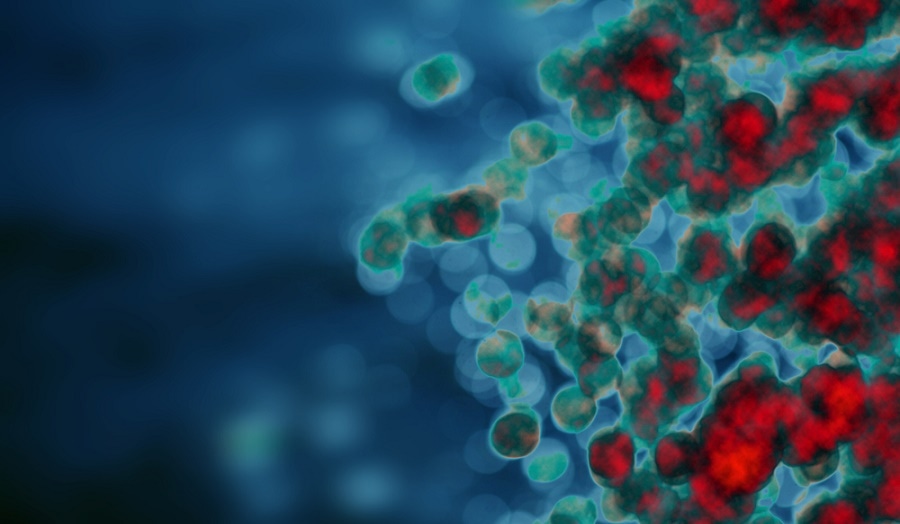Sep 19 2016
 Image Credit: monofaction/Shutterstock.com
Image Credit: monofaction/Shutterstock.com
Over the past few years there has been a lot of excitement regarding cancer treatments capable of mobilizing the body's immune system to fight the disease. Checkpoint blockade is one of the promising types of immunotherapy. Although this therapy has shown remarkable successes, checkpoint blockade therapy is not able to tackle some of the most fatal kinds of tumors.
Researchers at the University of Chicago have developed a resourceful method to make checkpoint blockade into more effective action. With the therapy, there is hope of an effective treatment for intractable metastatic cancers including those of the lung and colon.
Everybody out there working in the cancer space is trying to figure out ways to enhance checkpoint blockade immunotherapy. In this work, we were able to achieve that.
Wenbin Lin, Professor, University of Chicago
The technique requires an intricate blend of immune-stimulating nanoparticles made up of light-sensitive agents and standard chemotherapeutic drugs to act in unison to strengthen the checkpoint blockade.
Bolstering Immunity
Checkpoint blockade therapy functions by tackling the ability of cancer to turn off the immune reaction of the body. When cancer cells begin to grow, the body identifies them as foreign, activating T-cells to attack and destroy them. But as malignant cells increase and form into tumor, they emit biochemical signals that stifle the immune system and the T-cells fail to function accurately.
Checkpoint blockade therapy hinders those signals, enables T-cells spot the cancer cells as invaders once again, and allows the immune system to perform its task. The issue, said Lin, is that if a tumor has been developing for years then no T-cells will be inside it to activate, so the therapy ends in failure.
So what we’re trying to do is to come up with ways to recruit T-cells to the tumor, and if you have a way to make the T-cells recognize cancer cells, the T-cell will be able to go in there and kill the cancer cells.
Wenbin Lin, Professor, University of Chicago
The treatment Lin and partners formulated is a drug cocktail enclosed in a nanoparticle. The nanoparticles accumulate themselves from zinc and a drug known as oxaliplatin, which is extensively used to fight advanced-stage metastatic colon cancer. The outer layer is formed by a photosensitizing agent called pyrolipid.
When light is directed on the pyrolipid it produces molecules capable of killing cancer cells. It also triggers T-cells that can identify cancer cells, so the nanoparticles pack has a three-sided benefit.
The nanoparticles and a checkpoint blockade agent demonstrated the ability to remove tumors in a mouse, even when the tumors were extensively separated and one of them had not received any treatment.
The researchers injected a checkpoint blockade drug into the mouse’s abdomen which had two tumors at different areas in its body. They then injected the nanoparticles into the tail vein of the mouse. They directed light onto one of the tumors to trigger the pyrolipid. The other tumor was not given any treatment.
The irradiated tumor vanished as anticipated, but surprisingly, the other, untreated tumor vanished as well. Without irradiation using light means that T-cells were not activated in the second tumor, “so we should not expect that tumor to disappear,” Lin said. “But we believe that this combination is able to activate the immune system to generate the T-cells that will recognize the cancer cells. Then they go around the body and kill the cancer cells in the distant site that has not been irradiated with the light.”
Traveling T-Cells
This ability to stimulate T-cells in one area and have them move to other disease areas in other parts of the body could be an influential tool for treating cancer.
Most people do not die from their primary cancer tumor; they die from metastatic disease. When patients undergo a surgery, surgeons are not aware if there are other, smaller lesions in other parts of the body.
You cannot treat them because you don’t know where to look for them. If you activate immune cells, they can home in to cancer cells selectively. So you have a better chance of getting rid of these small metastatic tumors throughout the body.
Wenbin Lin, Professor, University of Chicago
Lin and colleagues have launched a company to expand the new therapy and have managed to raise preliminary funding for clinical trials.
“These findings open up new opportunities for using nanoparticles as a platform for combination therapies,” said Yu-Ying He, an associate professor of medicine and dermatology at UChicago who is familiar with the work. “If the mouse models are indicative of human disease, the combination therapy can increase the proportion of patients who respond to therapy without additional adverse side effects and can improve the quality of life for cancer patients."—Carla Reiter
Citation: “Core-shell nanoscale coordination polymers combine chemotherapy and photodynamic therapy to potentiate checkpoint blockage cancer immunotherapy,” by Chunbai He, Xiaopin Duan, Nining Guo, Christina Chan, Christopher Poon, Ralph R. Weichselbaum, and Wenbin Lin, Nature Communications, published online August. 17, 2016, doi:10.1038/ncomms12499.
Funding for this research was provided by National Cancer Institute, University of Chicago Medicine Comprehensive Cancer Center, Cancer Research Foundation, and Ludwig institute for Metastasis Research.